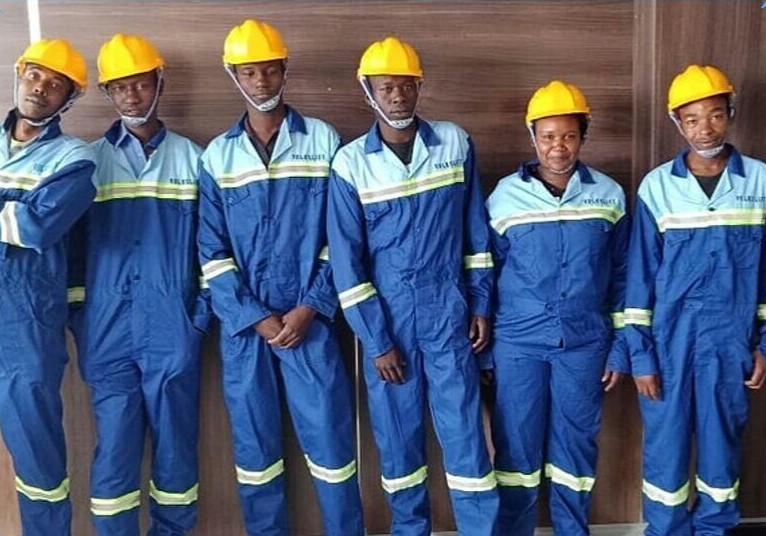As a piece of man-made technology, it is essential that an elevator is inspected by a licenced professional on a regular basis in order to ensure that it is safe for use. After all, a small problem can quickly develop into a serious issue that may end up putting the lives of passengers at risk. Here at Volkslift East Africa, our engineers are trained in order to deal with each and every lift related concern that our clients may have. Read on as we go over 3 signs that your elevator may be overdue a service…
Regular Breakdowns
In the event of a breakdown, an elevator is programmed to slowly grind to a halt within the shaft rather than plummet into the basement. With this said, breakdowns that occur frequently should be investigated by an engineer sooner rather than later as it often suggests that there is a serious fault with the mechanics that needs to be addressed.
Mid-Levelling
When an elevator cab stops above or below the desired floor, it is known as mid-levelling. This can cause health and safety issues as it may cause passengers to trip and fall over the lip as they enter or exit the lift. Usually, mid-levelling occurs when there is an issue with the brakes, and is more likely to occur when a lift is overdue a service or the maintenance requirements are regularly neglected.
Jerky Movements
An elevator journey that leaves passengers fearing for their lives is not an ideal outcome. In fact, these cabs should not be utilised until the problem is rectified. After all, jerky elevators can make a journey feel unstable and should be investigated promptly in order to determine the cause of such issues, especially when a service has not been carried out for quite some time.
Every functioning elevator should be inspected on a bi-annual basis in order to ensure that there aren’t any areas for concern within the internal components. In fact, a property owner that fails to abide by these requirements may land themselves with a hefty fine because they are an important health and safety regulation that must be implemented at all times. To find out more information about elevator servicing, get in contact with the lift maintenance experts at Volkslift East Africa today!
Can you imagine your building elevator not functional? Most people cannot. This is why proper elevator maintenance is a necessity.
Elevator maintenance involves ensuring that no accidents or breakdowns happen on elevators. Elevator maintenance helps avoid major replacements and it prolongs the life of elevators.

Choosing the right company for the maintenance of your building’s elevator will be connected to various benefits.
RELIABILITY AND HIGH QUALITY
The first and most obvious one is reliability. The elevator will be maintained in a proper way, which means that its up time will increase. You can expect quick reaction in the case of a problem.
Quality of maintenance matters, as well. This is why you should choose the right elevator companies. Picking the right contractor is essential for success. Proper maintenance will decrease the need for frequent calls to have your elevator repaired. Even if you have to pay more for a company that provides good customer service, you will be doing it less regularly than in the case of a mediocre elevator maintenance service.
ELEVATOR PASSENGER SAFETY
You will also be enjoying increased safety by selecting the right elevator companies. Let’s face it – the safe operation of an elevator is a very important aspect of maintaining a safe building. Elevator maintenance follows a set of criteria designed to maximize the safety of the people using it. Smooth transportation starts with a safe elevator that is functioning properly.
GETTING THE LATEST ELEVATOR TECHNOLOGY
Just like in the case of any device, an elevator will become outdated as time passes. Technology is changing and so are elevator parts. Look for an innovative elevator maintenance company to advise you on the best available technology for your elevator.
Contracting a quality elevator company will ensure that you will be gaining access to the latest technologies. Old parts will be replaced with innovative ones that increase the efficiency of the elevator and its longevity. An old system can be replaced altogether, giving you and the people living in the building access to the newest and most comfortable elevator ride.
Elevator passengers are expecting convenience and safety. It is your duty to make sure that you are getting access to an elevator company that provides superior customer services. Proper research and taking the time to interview different companies is essential for the selection an elevator company to best fit your needs.
Project management is the practice of initiating, planning, executing, controlling, and closing the work of a team to achieve specific goals and meet specific success criteria at the specified time.
At the start of a project, the amount of planning and work required can seem overwhelming. There may be dozens, or even hundreds of tasks that need to be completed at just the right time and in just the right sequence.
At Volkslift East Africa we guide our clients through the stages of project management.This ensures that the projects are completed on schedule and within the allocated budget. Lets take a look at the various stages:
Seasoned project managers know it is often easier to handle the details of a project and take steps in the right order when you break the project down into phases. Dividing your project management efforts into these five phases can help give your efforts structure and simplify them into a series of logical and manageable steps.
1. Project Initiation
Initiation is the first phase of the project lifecycle. This is where the project’s value and feasibility are measured. Project managers typically use two evaluation tools to decide whether or not to pursue a project:
- Business Case Document – This document justifies the need for the project, and it includes an estimate of potential financial benefits.
- Feasibility Study – This is an evaluation of the project’s goals, timeline and costs to determine if the project should be executed. It balances the requirements of the project with available resources to see if pursuing the project makes sense.
Teams abandon proposed projects that are labeled unprofitable and/or unfeasible. However, projects that pass these two tests can be assigned to a project team or designated project office.
2. Project Planning
Once the project receives the green light, it needs a solid plan to guide the team, as well as keep them on time and on budget. A well-written project plan gives guidance for obtaining resources, acquiring financing and procuring required materials. The project plan gives the team direction for producing quality outputs, handling risk, creating acceptance, communicating benefits to stakeholders and managing suppliers.
The project plan also prepares teams for the obstacles they might encounter over the course of the project, and helps them understand the cost, scope and time frame of the project.

3. Project Execution
This is the phase that is most commonly associated with project management. Execution is all about building deliverables that satisfy the customer. Team leaders make this happen by allocating resources and keeping team members focused on their assigned tasks.
Execution relies heavily on the planning phase. The work and efforts of the team during the execution phase are derived from the project plan.
4. Project Monitoring and Control
Monitoring and control are sometimes combined with execution because they often occur at the same time. As teams execute their project plan, they must constantly monitor their own progress.
To guarantee delivery of what was promised, teams must monitor tasks to prevent scope creep, calculate key performance indicators and track variations from allotted cost and time. This constant vigilance helps keep the project moving ahead smoothly.

5. Project Closure
Teams close a project when they deliver the finished project to the customer, communicating completion to stakeholders and releasing resources to other projects. This vital step in the project lifecycle allows the team to evaluate and document the project and move on the next one, using previous project mistakes and successes to build stronger processes and more successful teams.
Although project management may seem overwhelming at times, breaking it down into these five distinct cycles can help your team manage even the most complex projects and use time and resources more wisely.
